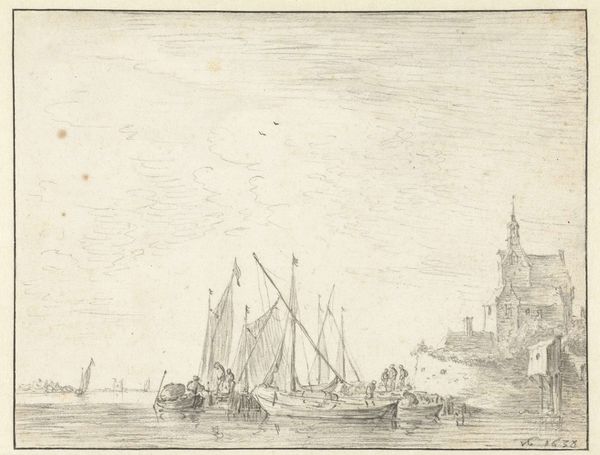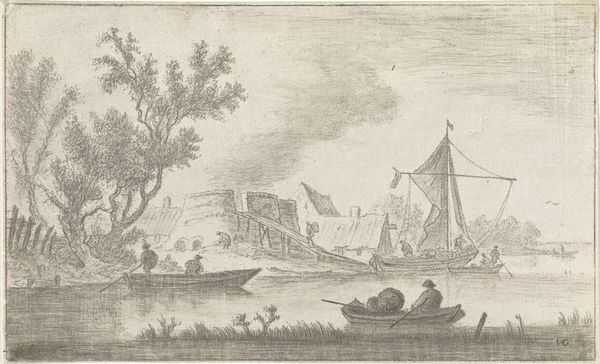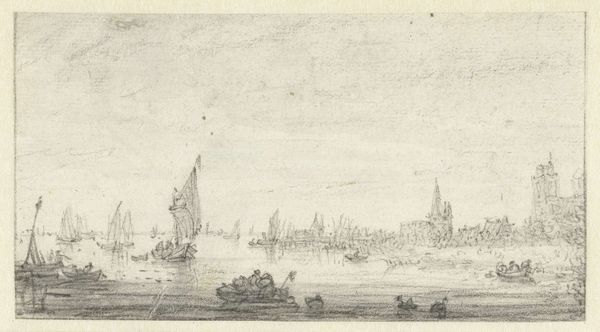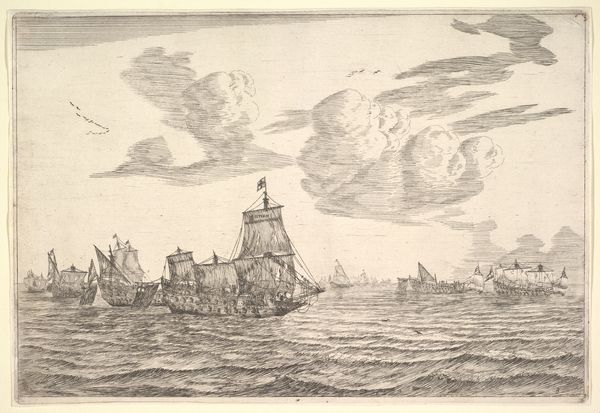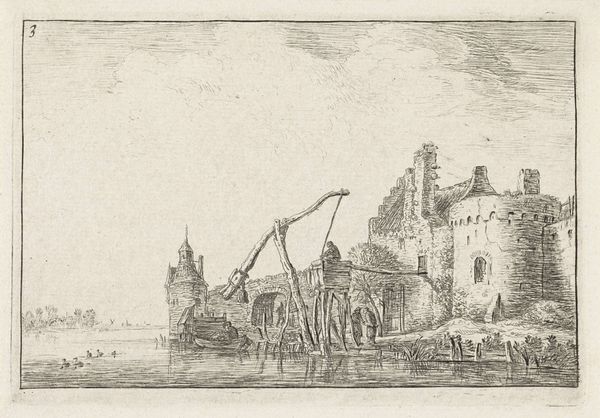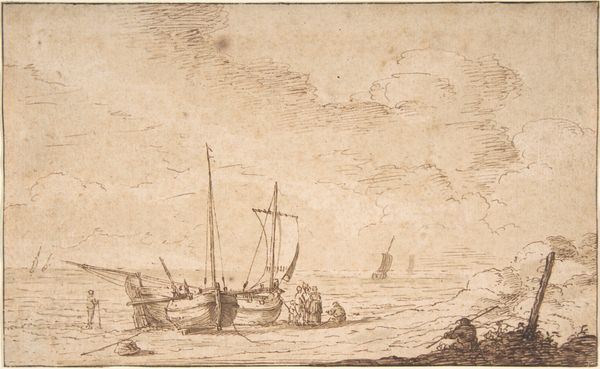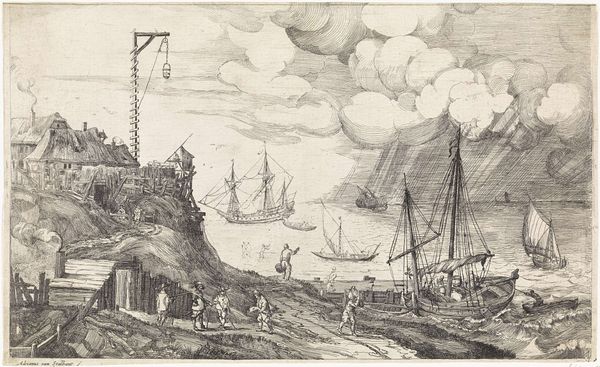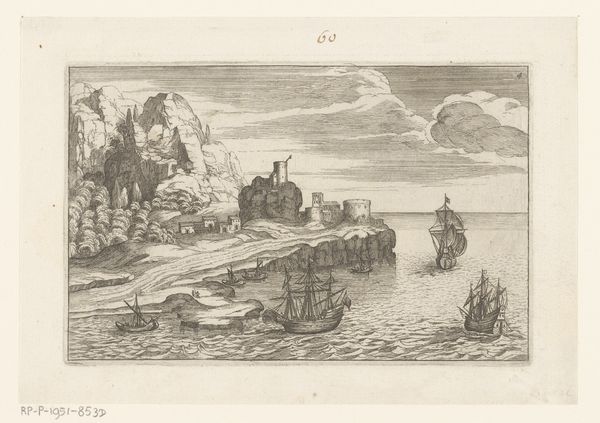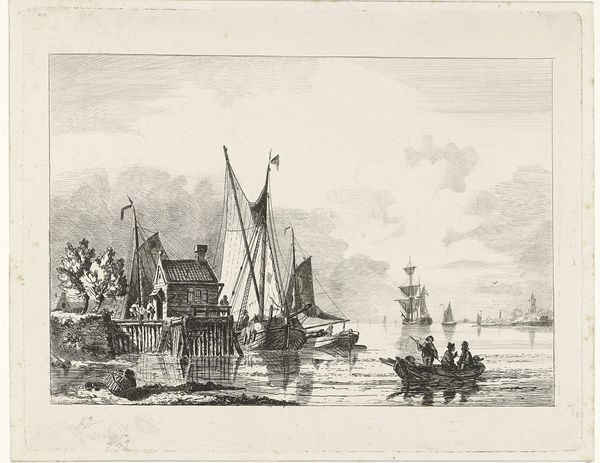
drawing, paper, watercolor, ink
#
drawing
#
baroque
#
dutch-golden-age
#
pencil sketch
#
landscape
#
paper
#
watercolor
#
ink
#
cityscape
#
watercolour illustration
#
genre-painting
#
sketchbook art
Dimensions: height 89 mm, width 154 mm
Copyright: Rijks Museum: Open Domain
Curator: What strikes me immediately about this delicate rendering is the towering form of what I believe is Mont-Saint-Michel. It's presented amidst a bustling harbor scene. What a romantic vision of power! Editor: The atmosphere is rather melancholic, wouldn't you say? The muted washes of ink and watercolor give the whole scene a sense of faded grandeur, like a memory half-forgotten. Curator: Precisely. The artist, Abraham Storck, who likely produced this work between 1645 and 1710, encapsulates the Baroque fascination with drama but in a decidedly understated way. Storck painted seascapes during the Dutch Golden Age, depicting a maritime superpower dealing with growing income disparity as merchant ships were bringing vast sums to a limited few. Storck's harbors are traditionally bustling. This one, however, feels a bit empty. Editor: The visual emphasis on the imposing architectural mass above the waves feels especially significant. I am tempted to interpret Mont-Saint-Michel here as a visual anchor, its towering silhouette representative of long standing systems, beliefs, and historical currents, isn’t it? Look at how that rock supports that cathedral, a clear reference to how solid values bolster spirituality. Curator: Definitely. I find it so telling how Storck places the natural landscape and the man-made fortress in direct conversation. Think of what this placement means historically. For whom exactly was access available? Who was deemed a worthy subject to experience the wealth and power within? The way that the smaller ships on the horizon look towards it for direction speaks volumes. Editor: Yes! Note also how Storck’s choice to depict it using predominantly monochrome adds to its emblematic quality, stripping away color, distilling Mont-Saint-Michel to its essence as a symbolic form. Even the surrounding vessels adopt similar gradations, all becoming components of a coherent visual language that highlights permanence. Curator: What persists is the question: How can cultural landmarks embody a location’s long complex legacy in this postcolonial era? This is the weight this delicate sketch shoulders. Editor: It makes one reflect upon how symbols evolve, accruing new significance with each historical turn. I feel newly empowered to consider the shifting identities embedded within seemingly straightforward art pieces.
Comments
No comments
Be the first to comment and join the conversation on the ultimate creative platform.
